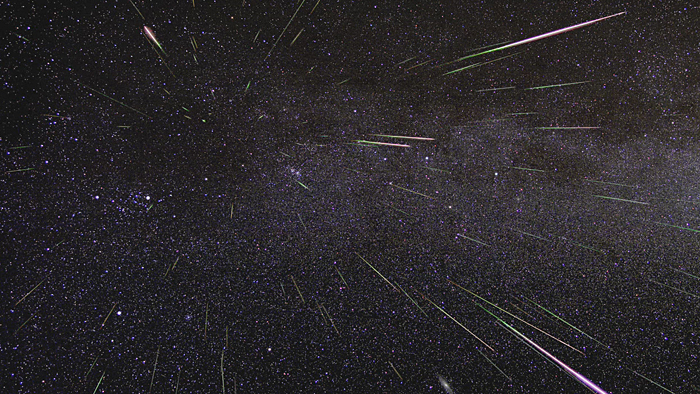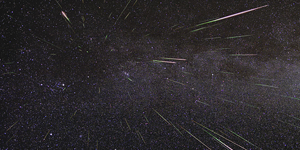Stay Up for the Perseid Meteor Shower
Log In
This year's Perseid Meteor Shower is predicted to be the especially bright! Pair skygazing this week with hands-on student science experiments that help bring the night sky into focus.

Photo: NASA/JPL
Looking Up
People with clear skies overhead may see up to 200 meteors an hour during the peak of this year's Perseid Meteor Shower. That's nearly double the average rate of meteors per hour during the annual meteor shower, making this year's nighttime show especially worth staying up to see.Student Science Connections
To learn more about projects and activities you can do with students to tie in with interest in the Perseid Meteor Showers, see the following:- Now Playing: The Perseid Meteor Showers
- Meteor Science: Weekly Science Project Idea and Home Science Activity Spotlight
For more information about this year's Perseid Meteor Shower, peak viewing times and dates, and why this year's shower is different, see the following:
- Perseid Meteor Shower 2016: When, Where & How to See It
- Perseid meteor shower 2016: Once in a decade 'outburst' expected
- This Year's Perseid Meteor Shower Is Going To Be Quite A Show -- Here's How To Watch
- Get Ready for the Perseids Meteor Shower: 'It Will Rival the Stars in the Sky.'
- Look Up! Perseid Meteor Shower Peaks Aug. 11-12
- Perseid meteor shower set for its best show in nearly 20 years
Categories:
You Might Also Enjoy These Related Posts:
- Inspiring AAPI Scientists and Engineers - Asian American and Native Hawaiian/Pacific Islander Heritage Month
- Plastics and Earth Day - Science Projects
- Arduino Science Projects and Physical Computing
- 10+ Robotics Projects with the BlueBot Kit
- 5 STEM Activities with Marshmallow Peeps
- March Madness Basketball Science Projects: Sports Science Experiments
- Women in STEM! More than 60 Scientists and Engineers for Women's History Month
- Explore Artificial Intelligence and Machine Learning with Student AI Projects
Explore Our Science Videos
DIY Mini Drone Part 4: Program Drone Steering with Arduino
Robotics Engineering Project: Use the Force! Push and Pull LEGO® Mindstorms® Robots
Make a Homemade Fly Trap









